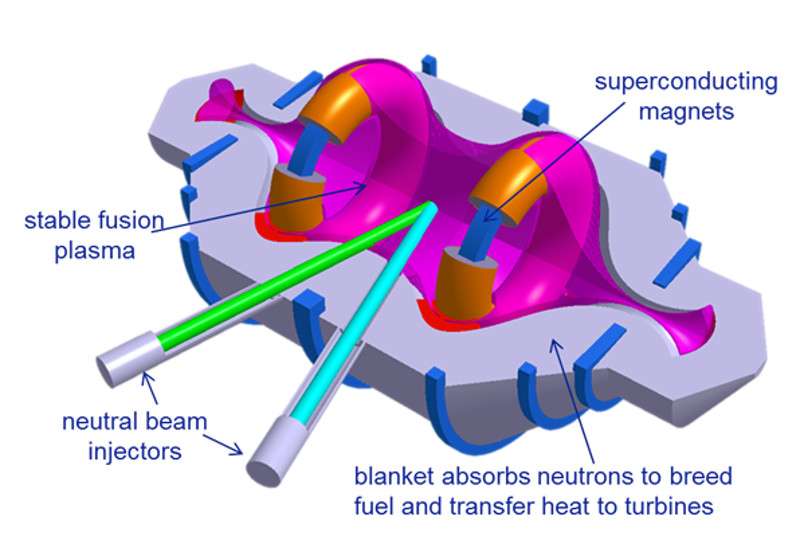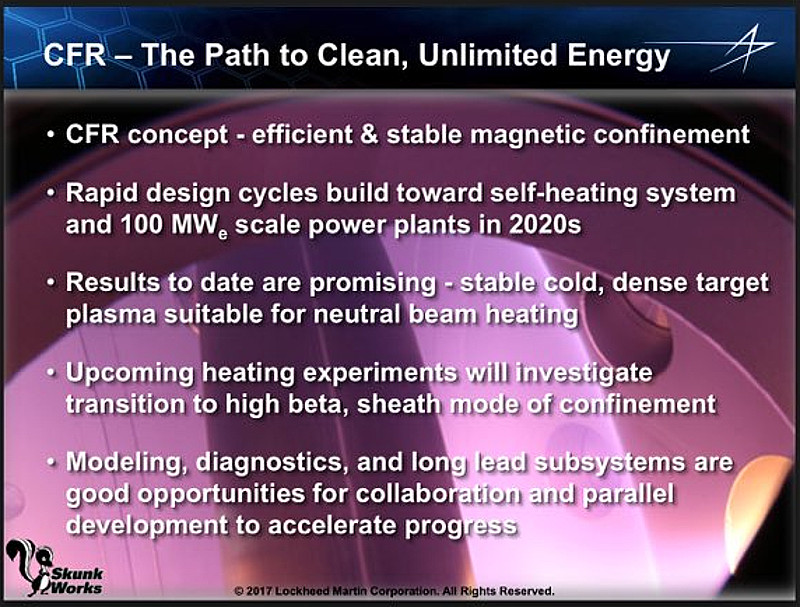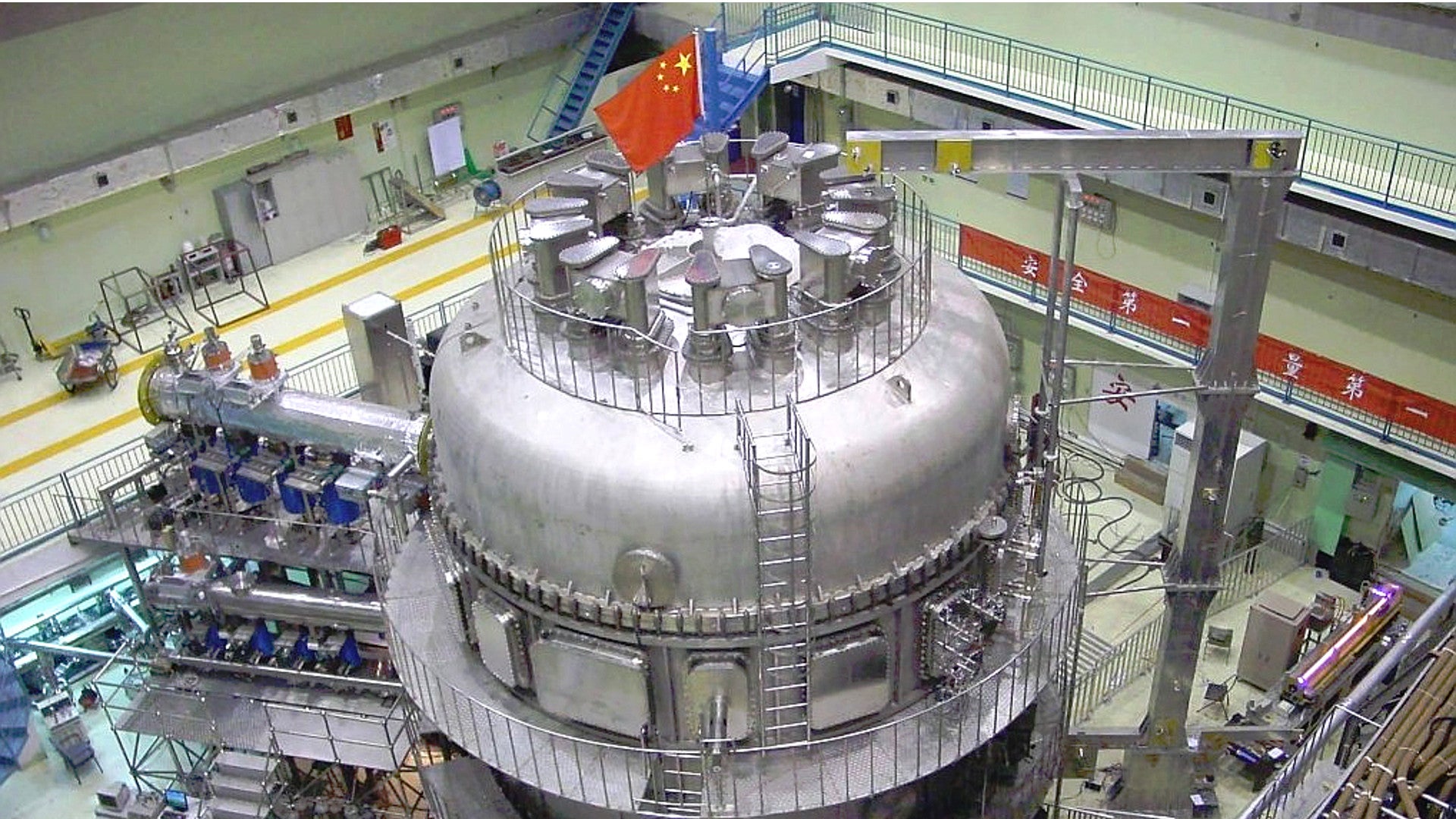China, which is reportedly hard at work on a host of advanced technologies for both military and civilian applications, has given foreign journalists a close look at its potentially revolutionary fusion energy project, which they claim has produced the longest man-made nuclear reaction of this type ever. The tour came as additional details have come to light regarding another advanced fusion reactor program at Lockheed Martin, which recently obtained a patent for portions of its own design.
Earlier in April 2018, the BBC got an inside look at the Experimental Advanced Superconducting Tokamak, or EAST, which sits within the Dongpu Science Island, a large research campus that is situated on lakeshore peninsula in China’s Anhui Province. The Hefei Institutes of Physical Science is directly responsible for the project, working under the direction of the government-run Chinese Academy of Sciences.
“Fusion is going to require huge breakthroughs from scientists and engineers as well as a lot of financial backing from the government,” Song Yuntao, Deputy Director in charge of EAST, told the BBC. “It’s a project which costs so much but personally I think it’s going to be great for the sustainable development of mankind.”
Song’s remarks downplay just how revolutionary practical fusion power could be for humanity. Unlike a fission reaction, in which atoms collide and release energy, fusion is the result of particles being forced together at extremely high temperatures until they fuse into a heavier nucleus.

When that happens, there is an exponentially greater discharge of energy compared to both nuclear fission and the burning of a traditional fossil fuel or similar chemical reactions. More importantly, the system doesn’t produce byproducts that are harmful to the ozone layer and needs only a small amount material in its core to function. On top of that, the isotopes in question are far less dangerous than those necessary for nuclear fission and therefore less likely to create a widespread radiological incident if the reactor fails catastrophically.
So, at least in theory, fusion has, since the 1920s, offered the promise of nearly limitless and exceptionally cheap energy that produces far less immediate pollution and leftover waste material than existing power generation methods. Unfortunately, for the reaction to work, the system needs to survive temperatures of hundreds of millions of degrees Fahrenheit, as well as the resulting pressures, and do for an extended period of time.
First invented in the 1950s, ring-shaped tokamaks, such as EAST, use a powerful magnetic field to contain the reaction. The Chinese researchers told the BBC that they’ve been able to sustain a single reaction for more than 100 seconds, which, if true, would stand as a world record.
The length of the reaction “gets longer every year,” the British news outlet reported, citing statements from officials at EAST. “Here [at EAST] they’re already talking about goals which are 10 times as long, at temperatures of 100 million degrees Celsius [180,000,032 degrees Fahrenheit].”

The problem with this claim, though, is that the team at EAST first said they broke the 100-second milestone in 2016. If there had been substantial progress since then, it seems unclear why the Chinese would have declined to share that with the visiting journalists.
The length of the reaction is also just one part of the fusion puzzle. The reactor also has to be able to withstand discharging the resulting energy in a useful way over a protracted period of time, which also involves significant temperatures and pressure strains. The Tore Supra, another tokamak in France, holds the record for plasma discharge duration at over six minutes.

In addition, China’s EAST suffers from the same problems that have plagued tokamaks for decades, chiefly that they continue to be inefficient producing relatively little energy despite their large size and the high cost of operation. The Chinese reactor sits inside a building the size of a two-story apartment block, according to BBC’s description.
It costs $15,000 just to turn it on each day and it’s not clear how long it stays on and how much testing gets done in the process. Without any data on the reactors power generation capabilities, it’s difficult, if not impossible, to accurately gauge how close to any real breakthrough the team at EAST might be in reality.
These issues have led other researchers to question whether a tokamak might ever be able to serve as the basis for a practical reactor. Dr. Thomas McGuire, head of a team working on a novel Compact Fusion Reactor program, or CFR, for Lockheed Martin’s Skunk Works advanced projects division, had this to say on the matter in an interview with Aviation Week in 2014:
“The problem with tokamaks is that ‘they can only hold so much plasma, and we call that the beta limit,’ McGuire says. Measured as the ratio of plasma pressure to the magnetic pressure, the beta limit of the average tokamak is low, or about ‘5% or so of the confining pressure,’ he says. Comparing the torus to a bicycle tire, McGuire adds, ‘if they put too much in, eventually their confining tire will fail and burst—so to operate safely, they don’t go too close to that.’”

McGuire’s team believes they may have found an answer with their new, now patented confinement chamber, or embodiment. Aviation Week described this new system as such:
“The CFR will avoid these issues by tackling plasma confinement in a radically different way. Instead of constraining the plasma within tubular rings, a series of superconducting coils will generate a new magnetic-field geometry in which the plasma is held within the broader confines of the entire reaction chamber. Superconducting magnets within the coils will generate a magnetic field around the outer border of the chamber. ‘So for us, instead of a bike tire expanding into air, we have something more like a tube that expands into an ever-stronger wall,’ McGuire says. The system is therefore regulated by a self-tuning feedback mechanism, whereby the farther out the plasma goes, the stronger the magnetic field pushes back to contain it. The CFR is expected to have a beta limit ratio of one. ‘We should be able to go to 100% or beyond,’ he adds.”
Other scientists in the field have been equally incredulous about this new approach, questioning the basic underlying concept, as well as Lockheed Martin’s aggressive schedule for new developments. In 2014, McGuire said he expected his team would be able to build a working example of the reactor within five years and a practical, production design within 10.

New information that we at The War Zone have received by way of our good friend Stephen Trimble, chief of Flightglobal’s Americas Bureau, makes it clear that Lockheed Martin remains committed to the project. At the same time, it also calls into question whether they’ll be able to stick to their original timetable.
An official, unclassified briefing from August 2017 shows that McGuire’s team has crafted at least four iterative experimental reactor designs, as well as an unknown number of subvariants. The most recent test example at that time was known as the T4B.

But the goals for the follow-one T5 and T6 indicate that the previous reactors were not even fully functional. The T5 would provide data on heating and inflating the plasma. Essentially, as the temperature of the plasma goes up, it expands, so it is necessary to test to make the physical limits of the confinement chamber.
The T6 appeared to be the first one Lockheed Martin would subject to a more serious high-temperature experiment. Lockheed Martin would only conduct a true, full-power demonstration with reactor large enough to represent the notional production version with the T7. Further experimental reactors would continue to validate the design on the way to the final, practical TX reactor.
The briefing says that the company now expects to have a workable compact reactor capable of generating a continuous 100 megawatts of power – the goal from the beginning – sometime in the 2020s. This is an at least five-year delay over the original schedule and is far vaguer than the previous developmental timelines.

Separately, in 2017, one independent scientist said that the data available suggested that prototype designs were no longer truly “compact.” Lockheed Martin had initially said that the reactor could weight as little as 20 tons, small enough to fit on the back of a typical semi-truck. Updated specifications, however, indicated that the experimental designs would have had to balloon to 100 times that size.
Lockheed Martin has long pitched the project as high-risk and high-reward. It’s hard to argue with that, given the undeniably game-changing potential of fusion power, but it seems as unclear as ever when and if the rewards might materialize. Still, quickly building sequential experimental reactors for increasingly more complex tests does reflect the kind of rapid prototyping Skunk Works has historically excelled at and which has generated real and significant results in the past with regards to other systems.

Increasingly energy-hungry, the Chinese government seems to have come to a similar conclusion about the value of investing heavily in fusion energy and is clearly committed to the EAST reactor experiment, regardless of its actual progress so far. Song, the project Deputy Director, told BBC his team had an equally aggressive set of goals to Lockheed Martin, too.
“The demand for energy is huge in every country and China has a roadmap for fusion-generated power,” he said. “We want to complete the design for a test fusion reactor within five years.”
That schedule would put China in competition with Lockheed Martin for who might be first to produce a viable fusion reactor. We’ll definitely be keeping an eye out for news that either party is getting closer to meeting those ambitious, but world-changing goals.
Contact the author: jtrevithickpr@gmail.com
